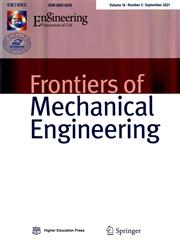Knowledge-based engineering and computer vision for configuration-based substation design
IF 4
2区 工程技术
Q1 ENGINEERING, MECHANICAL
引用次数: 0
Abstract
Introduction: As the increase in electrification poses new demands on power delivery, the quality of the distribution system is paramount. Substations are a critical part of power grids that allow for control and service of the electrical distribution system. Substations are currently developed in a project-based and manually intensive manner, with a high degree of manual work and lengthy lead times. Substations are primarily sold through tenders that are accompanied by an inherent need for engineering-to-order activities. Although necessary, these activities present a paradox as tender processes must be agile and fast. To remedy this shortcoming, this article outlines a knowledge capture and reuse methodology to standardize and automate the product development processes of substation design. Methods: A novel framework for substation design is presented that implements knowledge-based engineering (KBE) and artificial intelligence methods in computer vision to capture knowledge. In addition, a product configuration system is presented, utilizing high-level CAD templates. The development has followed the KBE methodology MOKA. Results: The proposed framework has been implemented on several company cases where three (simplified) are presented in this paper. The framework decreased the time to create a 3D model from a basic electric single line diagram by performing the identification and design tasks in an automated fashion. Discussion: Ultimately, the framework will allow substation design companies to increase competitiveness through automation and knowledge management and enable more tenders to be answered without losing engineering quality.基于知识工程和计算机视觉的组态变电站设计
简介:随着电气化的发展对电力输送提出了新的要求,配电系统的质量至关重要。变电站是电网的重要组成部分,可对配电系统进行控制和服务。变电站目前是以项目为基础、人工密集的方式开发的,人工工作量大,交付周期长。变电站主要通过招标进行销售,招标伴随着工程订购活动的固有需求。尽管这些活动是必要的,但由于招标过程必须灵活快速,因此存在矛盾。为了弥补这一缺点,本文概述了一种知识捕获和重用方法,以标准化和自动化变电站设计的产品开发过程。方法:提出了一种新的变电站设计框架,该框架实现了基于知识的工程(KBE)和计算机视觉中的人工智能方法来获取知识。此外,还介绍了一个利用高级CAD模板的产品配置系统。开发遵循了KBE方法MOKA。结果:所提出的框架已经在几个公司案例中实现,其中本文给出了三个(简化的)案例。该框架通过以自动化方式执行识别和设计任务,减少了从基本电气单线图创建3D模型的时间。讨论:最终,该框架将使变电站设计公司能够通过自动化和知识管理提高竞争力,并在不损失工程质量的情况下回答更多的投标。
本文章由计算机程序翻译,如有差异,请以英文原文为准。
求助全文
约1分钟内获得全文
求助全文
来源期刊

Frontiers of Mechanical Engineering
Engineering-Mechanical Engineering
CiteScore
7.20
自引率
6.70%
发文量
731
期刊介绍:
Frontiers of Mechanical Engineering is an international peer-reviewed academic journal sponsored by the Ministry of Education of China. The journal seeks to provide a forum for a broad blend of high-quality academic papers in order to promote rapid communication and exchange between researchers, scientists, and engineers in the field of mechanical engineering. The journal publishes original research articles, review articles and feature articles.
 求助内容:
求助内容: 应助结果提醒方式:
应助结果提醒方式:


